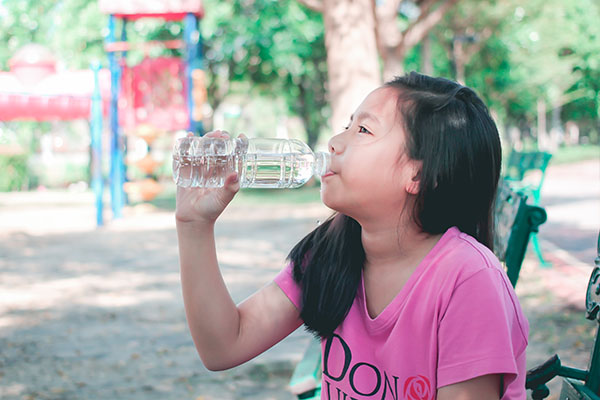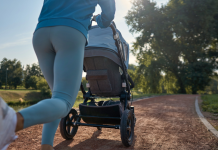

Texas summers are brutal. Afternoons have a white hot sheen to them and a “cold front” merely signals a dip into the low 90s. While we can’t change the summer weather, we can be informed on how to play outside safely. This goes for student athletes, infants, young children, and even yourself.
Did you know cases of heat stroke spike at the end of June into July each year and continue through August? That tells me we need to be more mindful of the heat and able to recognize signs of heat exhaustion and heat stroke in children. Be honest—do you know what to do in either of those situations? Let’s take a minute to educate ourselves. Children’s Health has provided us with a list of symptoms to watch for and ways to stay safe in the Texas heat.
Before we start, a vocabulary lesson:
HEAT EXHAUSTION often occurs after a child has been exercising or playing in the heat and becomes dehydrated from losing excessive fluids and salt from sweating. It’s important to treat heat exhaustion immediately, as it can develop into heat stroke.
Important: Children may be at a higher risk for heat exhaustion if they are overweight, taking certain medications, have a sunburn, or are sick.
HEAT STROKE is a severe type of heat illness that occurs when a child’s body creates more heat than it can release. This results in a rapid increase in core body temperature, leading to brain damage or death if not promptly treated. (This is a medical emergency, and you should seek medical treatment immediately!)

Symptoms of HEAT EXHAUSTION include:
- Cool, clammy skin despite the heat
- Goose bumps
- Headache
- Increased sweating
- Increased thirst
- Muscle cramps
- See additional signs of heat exhaustion here.
If your child shows symptoms of heat exhaustion, you should:
- Bring your child to a cool, shaded spot (or inside if you can).
- Have them drink cool fluids that contain salt (like sports drinks).
- Apply a cold wet towel or sponge to the skin.
- If your child complains of cramps in the legs, arms, or abdomen, you can gently stretch or massage sore muscles.
Important: If your child is unable to drink or seems to be losing alertness, call your doctor or seek medical attention.
Symptoms of HEAT STROKE include:
- Absence of sweating
- Confusion, disorientation
- Loss of consciousness
- Nausea, vomiting, diarrhea
- Rapid heartbeat and breathing
- Severe headache
- Seizures
- See additional signs of heat stroke here.
Heat stroke requires emergency medical treatment. As you wait for help to arrive, do the following:
- Bring your child indoors or into shade and undress them.
- Begin to rapidly cool your child by immersing them in a bathtub of cold water.
- If a bathtub is not available, apply cold towels over much of the body, replacing frequently.
- Avoid pushing fluids unless your child is conscious and alert.
PREVENTING HEAT ILLNESS IN YOUNG ATHLETES:
- Take frequent water breaks to rest and stay hydrated (dehydration can sneak up on kids!).
- Wear appropriate clothing: light colored, lightweight, and moisture wicking.
- Avoid outdoor exercise during peak sun hours (noon to 6pm), if possible.
Important: Athletes are at a higher risk for heat exhaustion if they are poorly acclimatized to heat or if they have sickle cell trait (SCT). Talk to coaches and make sure they have a plan for hydration and emergencies.
PREVENTING HEAT ILLNESS IN CHILDREN:
- NEVER leave infants or children in the car alone. It gets too hot too fast.
- Go out during cooler times of day, early in the morning or later in the evening.
- Seek shade as much as possible, especially when taking a rest or water break.
- Choose clothing that is loose-fitting, light-colored, and moisture-wicking rather than heavy cotton.
- Bring water bottles with you! Take frequent water breaks to cool off and avoid dehydration. Don’t count on finding a water fountain. I haven’t seen a water fountain in service since COVID, have you?















This is great info. Texas summers are no joke